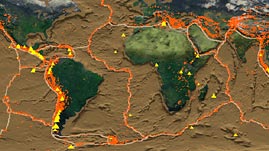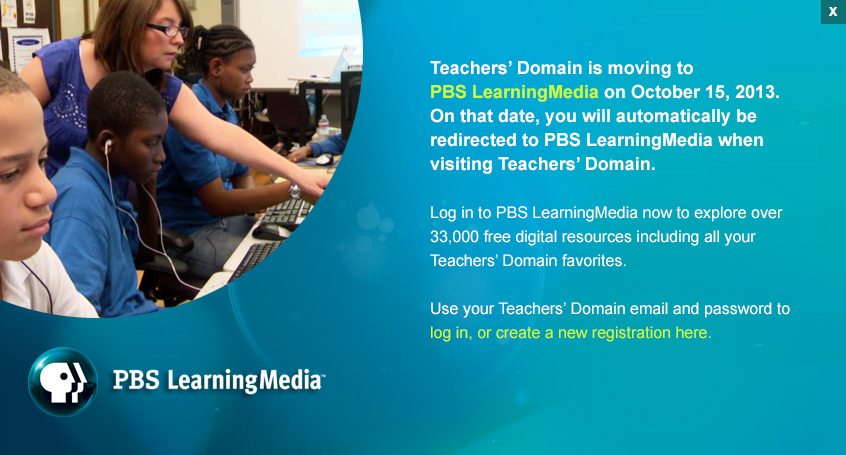Teachers' Domain - Digital Media for the Classroom and Professional Development
User: Preview

Source: Produced for Teachers' Domain
According to theory of plate tectonics, Earth is an active planet — its surface is composed of many individual plates that move and interact, constantly changing and reshaping Earth's outer layer. Volcanoes and earthquakes both result from the movement of tectonic plates. In this interactive activity produced for Teachers' Domain with images from NASA, see the relationship between earthquakes and volcanoes and the boundaries of tectonic plates.
Volcanoes and earthquakes are seemingly very different geological events, yet they are actually closely related — both result from movements of Earth's crust. Earth's crust — the lithosphere — is composed of several major plates and many minor plates that change shape and position. Over time, these tectonic plates move, interact with each other, and are responsible for the formation of ocean basins, mountain ranges, islands, volcanoes, and earthquakes.
The theory of plate tectonics is relatively new. In the early 1900s, Alfred Wegener first developed a theory of continental drift based on a collection of evidence that showed striking similarities in rocks and fossils found on continents separated by vast distances. Sometime later, Arthur Holmes proposed a mechanism to explain how the continents could have moved across Earth's surface. He proposed that circular convection currents of molten material deep within Earth could provide ample force to divide and move continents. By the late 1960s, evidence of seafloor spreading helped to support the now well-accepted theory of plate tectonics.
Three main types of boundaries exist between tectonic plates. The first, called a divergent boundary, occurs most often at mid-oceanic ridges. Here, two plates move away from each other, forming a break, or rift, in Earth's crust. Magma from the mantle rises to fill the gap, creating new crust. The second type, called a convergent boundary, occurs where two plates moving toward each other meet. If at least one of the plates is made up of relatively dense oceanic crust, the denser of the two plates subducts, or slides beneath the other. If both plates are made up of continental crust, very little subduction occurs. Instead, the plates buckle and fold to create valleys, ridges, and high mountain ranges. The last type of boundary is called a transform boundary. At these locations, plates slide roughly alongside each other in opposite directions. The plates often get stuck as they move past each other, leading to a build-up of tension, which is ultimately released in the form of an earthquake.
The zones along plate boundaries are the most geologically active regions on Earth. Earthquakes are common along all types of boundaries and occur all over the world; volcanoes are generally associated with divergent and convergent boundaries. One of the most well-known plate boundaries encircles the Pacific Ocean, and the frequent earthquakes and volcanic activity along this circle of boundaries have caused it to be dubbed the Ring of Fire.
 Loading Standards
Loading Standards Teachers' Domain is proud to be a Pathways portal to the National Science Digital Library.
Teachers' Domain is proud to be a Pathways portal to the National Science Digital Library.
